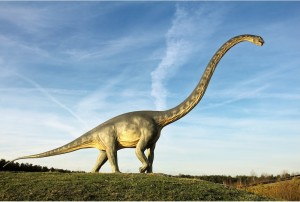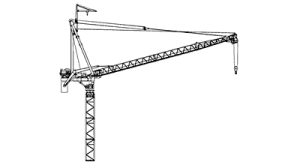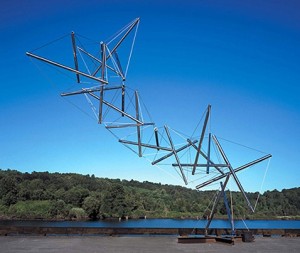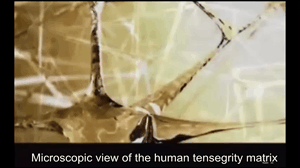You m ay experience some neck tension with stress and prolonged sitting at the computer, driving or working at a bench. But think of the poor old Diplodocus, how did they manage to hold their heads up with a 7 metre long neck? They didn’t have a tall frame on their shoulders and the cables that we see holding up the long boom of the cranes on high-rise building sites.
ay experience some neck tension with stress and prolonged sitting at the computer, driving or working at a bench. But think of the poor old Diplodocus, how did they manage to hold their heads up with a 7 metre long neck? They didn’t have a tall frame on their shoulders and the cables that we see holding up the long boom of the cranes on high-rise building sites.
The Diplodocus used a wonderful structural design which is actually the structural basis of all life forms. It is the structure of all parts of us from our DNA to our cells to our organs to our bones, muscles and nerves. It’s called the tensegrity matrix.
The term tensegrity (“tension” + “integrity”) was coined by Buckminster Fuller (best known for the geodesic dome). Use of a tensegrity design creates a structure with the strength, stability, and flexibility far greater than would be expected of its individual parts.
In plants and animals the matrix is the material that forms the structure of every part, from within the individual cells to the whole plant or animal. It is the tissue that supports, connects, binds together and transmits information.
This is a vastly different model from the conventional understanding of the body as a skeleton clothed in muscle and skin.
The Diplodocus’ very long and flexible neck, able to move in all directions and support its head, was due to its tensegrity structure rather than the lever and pulley system we see in a building crane.
The tensegrity model explains how cells and the whole body can move and respond to forces from the outside and forces within. It also utilises the body’s energy and nutrients to remain strong and flexible. It is known as the tensegrity matrix.
When we look at our body as a whole, the matrix is made up of connective tissues. Connective tissue consists of cells and fibres which weave their way throughout our bodies surrounding our brain, organs, bones, muscles and nerves. Connective tissue also includes: bones, cartilage, tendons, ligaments, fat tissue and blood and lymph systems.
In addition, the matrix has specific structural and electrical properties that respond to changes to its tension and shape. These changes have been shown to have a significant effect on everything from the function of individual cells to the function of the whole body. In humans, these changes can have a dramatic influence on health and wellness.
The tensegrity matrix is amazingly resilient and flexible, allowing us to perform all kinds of activities – from simple bending to gymnastics. It is even capable of bouncing back into shape after significant forces are applied it. But there is a limit – sometimes the forces are too strong for our structure to absorb.
Trauma, as the result of a physical injury or from mental/emotional stress, results in a change in tension and shape of the matrix. This causes a region of the body to become more rigid and have a decreased flow of energy (electrical charge). This isn’t always experienced as local pain, but as the rigidity continues it can result in pain and stiffness in other parts of the body that are connected via the matrix.
The techniques I use are designed to release tension in the tensegrity matrix. Positive changes to this matrix are more likely to occur with a very gentle specific contact than with a forceful one, because a forceful contact may cause the matrix to go further in a rigid protective mode. With the release of tension there is a greater flow of energy throughout the body causing increased strength and flexibility and improved function of organs, the brain and nervous system, the blood and lymph systems and the digestive system.









Leave A Comment